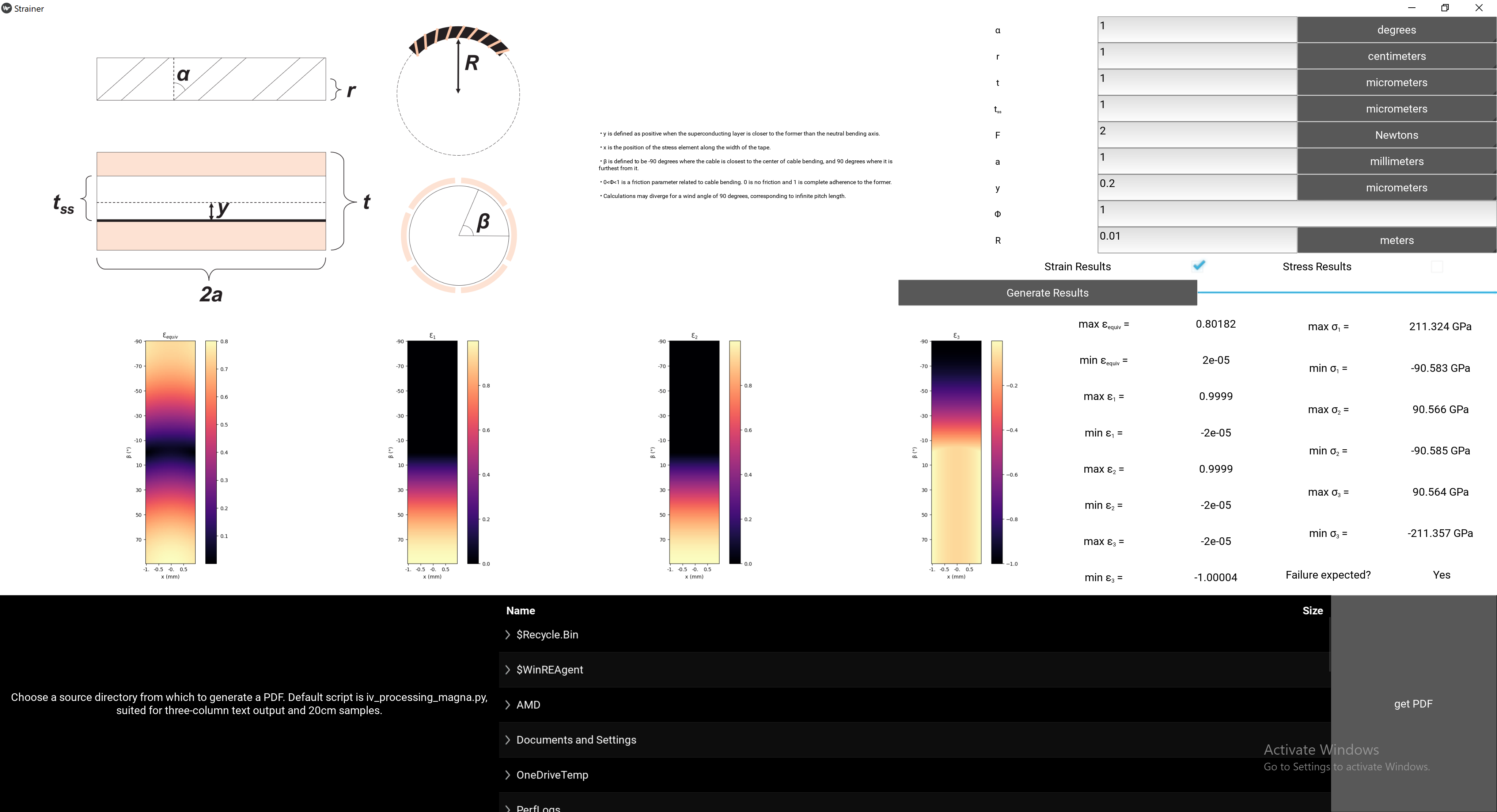Mechanical Failure in Superconducting Power Cables
Date:
Mechanical Failure in Superconducting Power Cables.
From June until August of 2023, I worked as an engineering intern at VEIR under the supervision of Virginia Phifer (principally), Jason Miller, and Sasha Ishmael. I was a part of the HTS (high-temperature superconductor) team, which was concerned with the AC and DC properties in addition to the behavior of the cable and cable terminations in the case of a fault. My internship was focused on DC testing (critical current degradation) as a measure of mechanical damage to the superconductor after undergoing different degrees of stress, which was accomplished by bending the superconducting tapes to smaller diameters. In addition to performing this testing, I wrote code to help analyze the data obtained from the DC testbed and created a model (which was later adapted into code and then an application) of the stress state at the superconducting layer given certain geometrical parameters.
I worked alongside fellow interns Alex Krakower, Jacob Prisament, and Priyanshi Somani. Alex designed several of the parts needed to complete my project and worked on various projects to help the HTS team and others, including designing a multi-sample probe for the short sample testing I was conducting. Jacob worked with the cryogenics team on a cryogenic valve test stand which he designed, built, wired, and coded, and provided me with valuable input as I constructed my own UI. Finally, Priyanshi worked with the commercial team as a data analyst and helped create software tools to identify the most valuable/suitable transmission projects for VEIR. All were brilliant and I owe them a big thanks for their help, friendship, and good company.
I also owe many thanks to Virginia for teaching me nearly everything to do with superconductivity, the DC testbed, sample preparation, and good lab practices. Finally, thanks to Sasha, Jason, the rest of the HTS team, with whom I worked closely and were extremely generous in their support for both Alex and me.
This summary is abridged to avoid disclosing intellectual property.
Short sample testing
The DC characterization of samples of HTS tape is an examination of the critical current, or the $I_c$, and the n-value of the superconducting transition. The critical current is determined by selecting the current for which the voltage drop equals $1\frac{\mu V}{cm}$, and the n-value of the transition is determined by fitting the I-V curve, as it is called, with an exponential of the form:
\[V = V_0 (\frac{I}{I_c})^n\]where $V$ is the voltage, and $V_0$ is the voltage at the critical current (simply the length of the sample in centimeters multiplied by $1\frac{\mu V}{cm}$).
The below images show example outputs of the automated I-V curve and fitting analysis code which I wrote (images and values were formatted automatically into LaTeX and compiled/typeset/exported using a subprocess). The first shows the shape of the I-V curve for a superconductor up to the critical current. The second shows the code’s approximations of the critical current and n-value for several test runs.
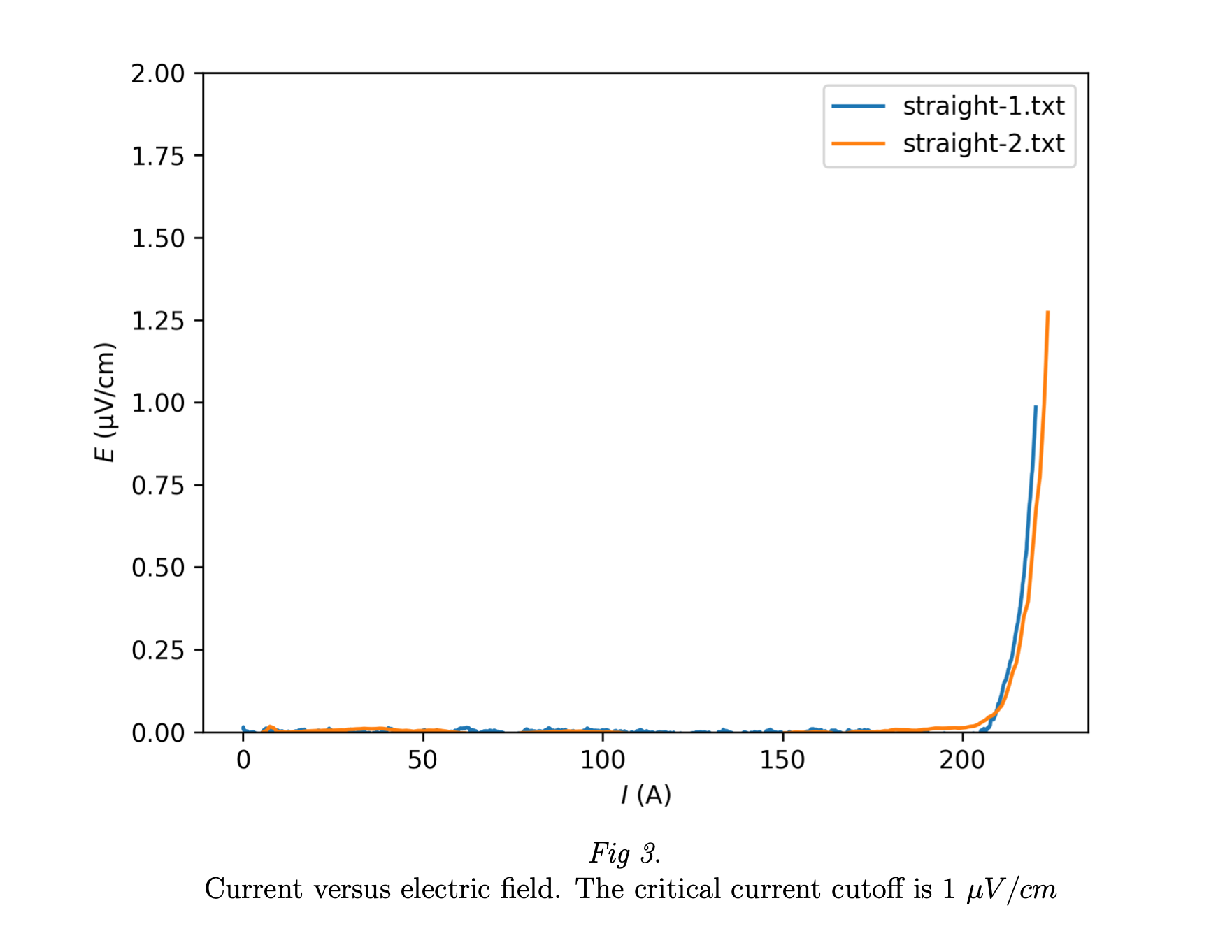
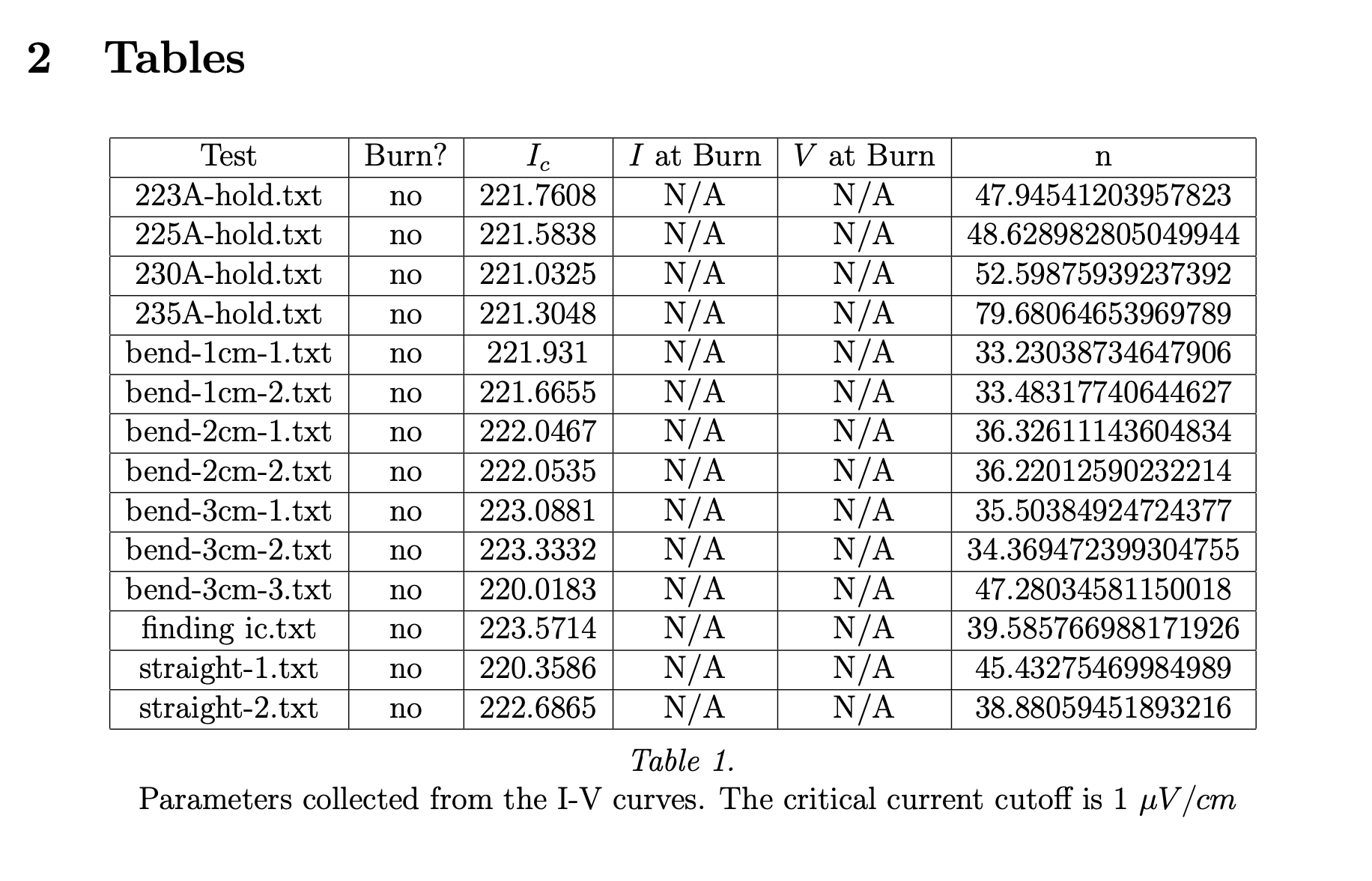
The software NI LabVIEW was used to put instruments and control panel commands in communication, and to return results from each run.
Strain Model
Having been tasked with short sample measurements on bent short samples of superconducting tape, starting on the third week of my internship, I began to design a model to approximate the state of strain/stress in the tape for geometrical deformations that could be expected when winding the tape around a cable for use in a power line. I discussed this idea first with Chet VanGaasbeek, who helped me advocate for its adoption into VEIR’s test plan and helped me refine the model by simulating the strain and stress in Ansys for the same set of materials and geometry parameters.
Throughout my work on this model, I documented my progress and all relevant equations in a TeX document that was later subsumed into the main cable modeling document, authored by Nathaniel Shields.
The model did not perfectly replicate Ansys’ results but was accurate to Ansys for the evaluation of equivalent strain. My model reported a slightly higher principal strain, while Ansys reported a significant in-plane shear strain that my model did not resolve. Nonetheless, the model I built was able to accurately predict failure in real experimental short sample bending tests, paired with a failure criterion commonly used in the relevant literature — that failure occurs beyond 0.45% tensile strain.
The strain model’s results can be compiled for each principal stress and strain, in addition to the equivalent strain. Results are given in arrays that can be shown using Pyplot’s colorbar graphic. The below image shows equivalent strain results for varying geometrical parameters.

Once the model was nearly complete, the internship was nearly over and I began to think of ways to summarize and package my results and model in a way that was more approachable for future users. Jacob gave me the idea to use Kivy, a Python library for UI, to create a UI for my model. I also decided to package the PDF-building I-V curve analysis code into this UI to make running it more straightforward. The final kivy app looks like this:
Photos

VEIR's family and friends event
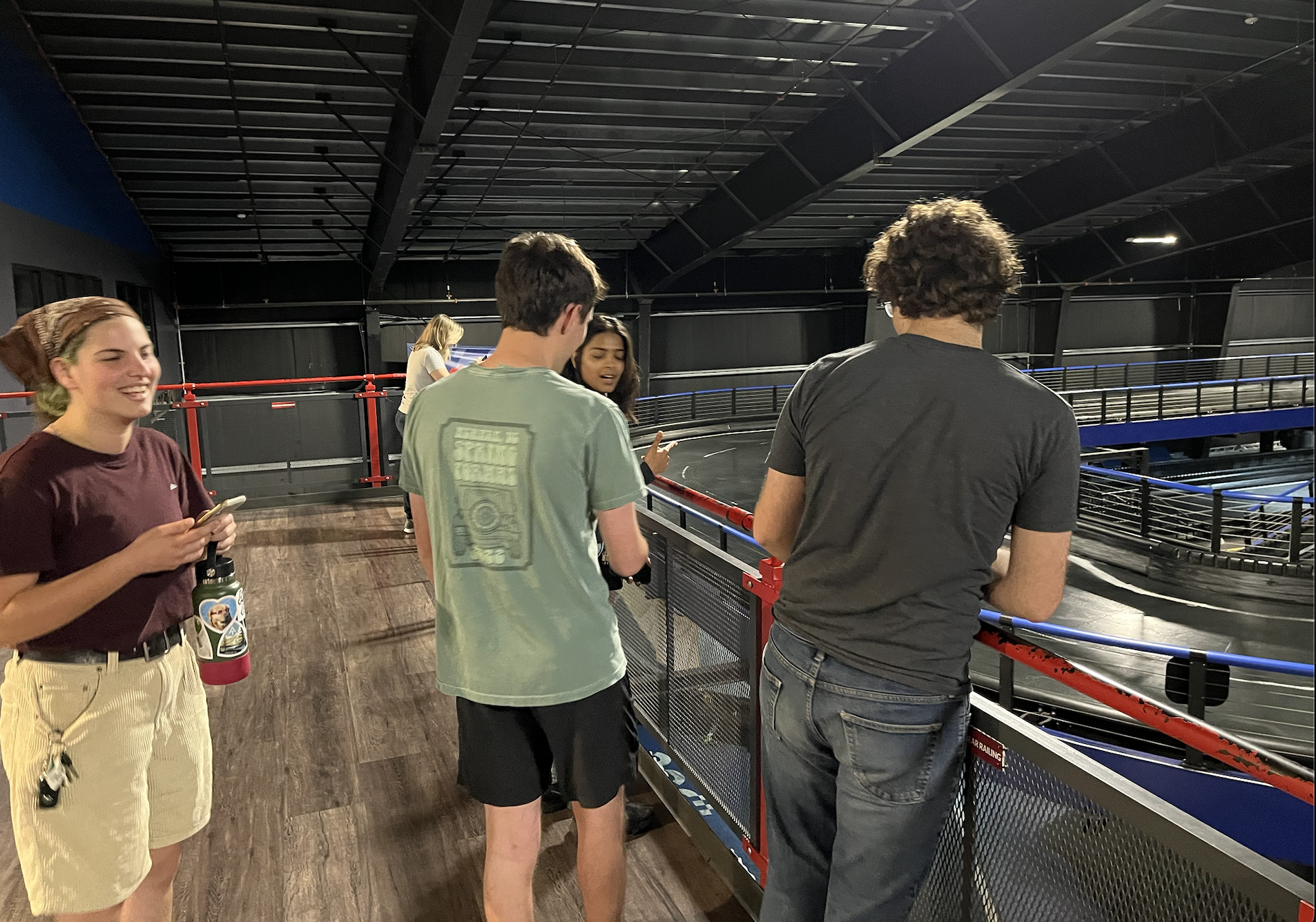
Go-karting with Jillian and the interns
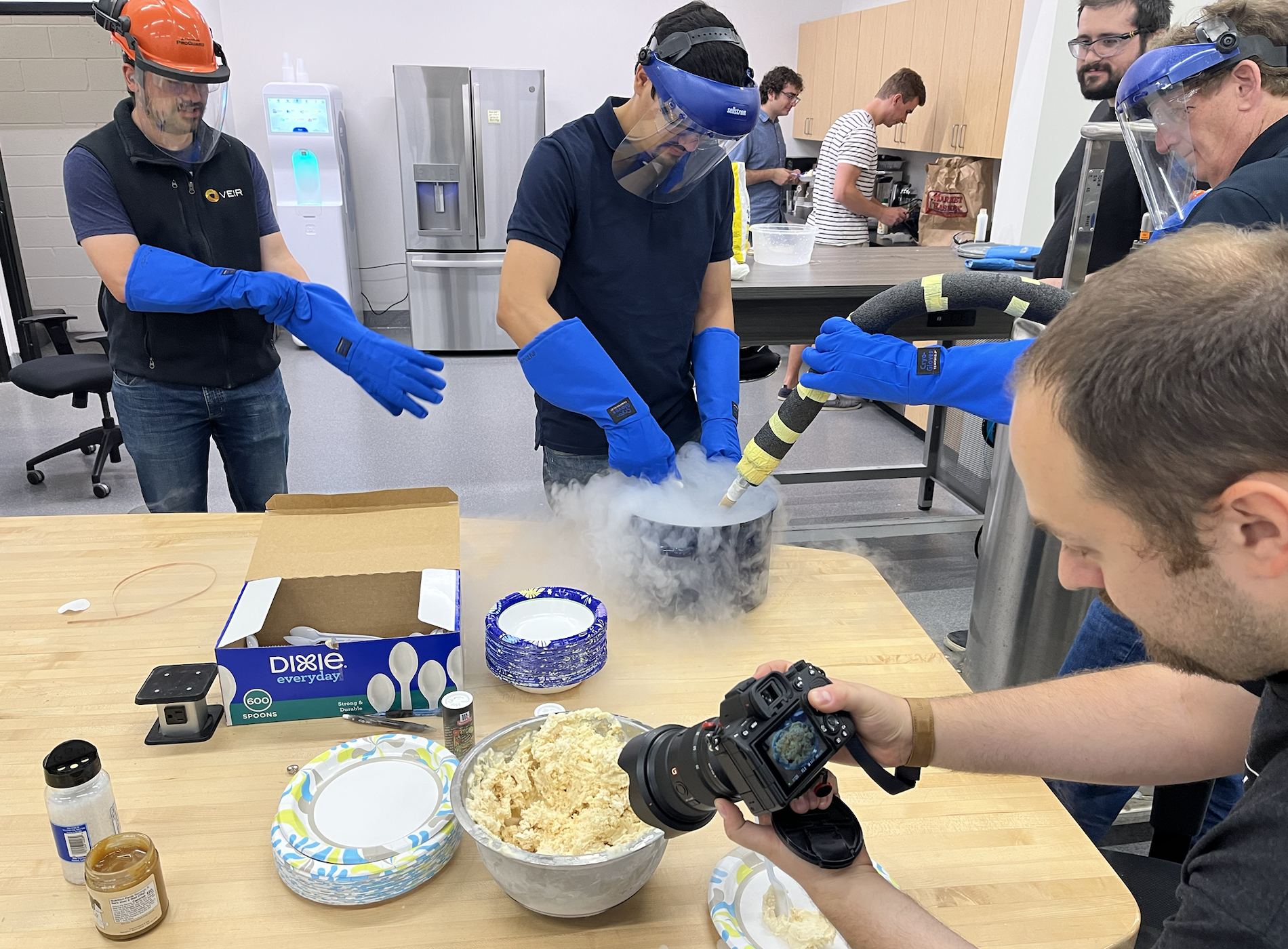
Making liquid nitrogen ice cream (raspberry and caramel)

